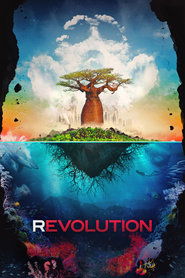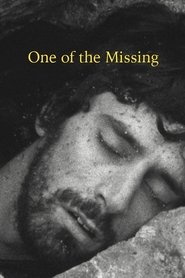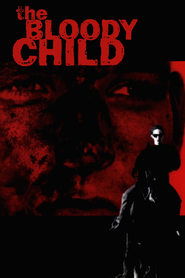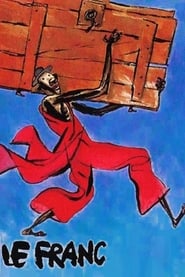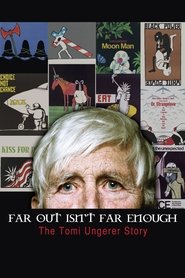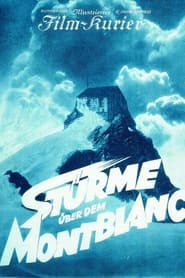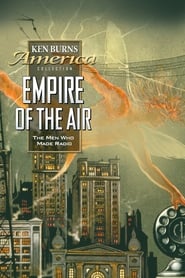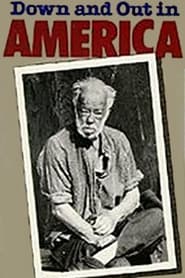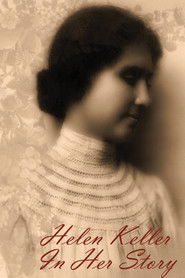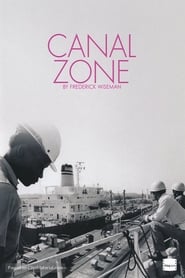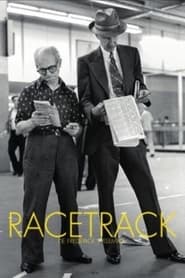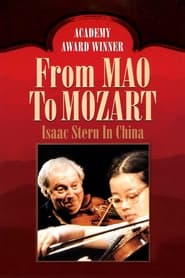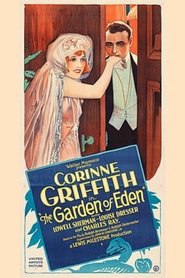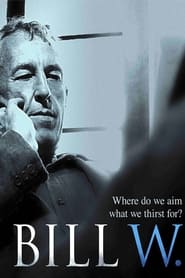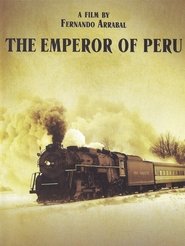Top Rated Movies on Kanopy - Page 298
-
Revolution
2012
Revolution
2012
star 6.1Revolution is a new movie from internationally-acclaimed filmmaker Rob Stewart. A follow-up to his award-winning documentary Sharkwater, this continues his remarkable journey of discovery to find out that what he thought was a shark problem is actually a people problem. As Stewart's battle to save sharks escalates, he uncovers grave dangers threatening not just sharks, but humanity. In an effort to uncover the truth and find the secret to saving our own species, Stewart embarks on a life-threatening adventure through 15 countries, over four years in the making. In the past four years the backdrop of ocean issues has changed completely. Saving sharks will be a pointless endeavor if we are losing everything else in the ocean, not just sharks. Burning fossil fuels is releasing carbon dioxide into the atmosphere; changing the oceans, changing atmospheric chemistry and altering our climate. -
One of the Missing
1968
One of the Missing
1968
star 7.1A Southern soldier in the American Civil War is sent to reconnoiter the enemy positions and becomes trapped beneath a huge pile of rubble by Northern cannon fire. His loaded gun is left pointing precariously at him and he is faced with imminent death. -
The Iran Job
2012
The Iran Job
2012
star 5.5This eye-opening documentary follows American basketball player Kevin Sheppard during his 2008-09 season playing for a professional team in Iran. Although Kevin is nervous, he makes many friends, including several politically active Iranian women. -
The Bloody Child
1996
The Bloody Child
1996
star 5This film was inspired by a real event—a young US Marine, recently back from the Gulf War, was found digging a grave for his murdered wife in the middle of the California Mojave. -
Missile
1988
Missile
1988
star 6.5MISSILE follows the 4315th Training Squadron of the Strategic Air Command at Vandenberg Air Force Base in California, where Air Force officers are trained to man the Launch Control Centers for the Minuteman Intercontinental Ballistic Missiles. Sequences include discussion of the moral and military issues of nuclear war; the arming, targeting and launching of the missile; codes; communications; protection against terrorist attack; emergency procedures; staff meetings and tutorial sessions. -
Le Franc
1994
Le Franc
1994
star 6.2A penniless, fast-thinking musician buys a lottery ticket which he glues to his back door, in hopes of eventually retrieving his instrument from his exasperating landlady. —but the ticket wins... -
Far Out Isn't Far Enough: The Tomi Ungerer Story
2012
star 7.1Far Out Isn't Far Enough: The Tomi Ungerer Story depicts one man's wild, lifelong adventure of testing societal boundaries through his use of subversive art. This 98-minute film combines traditional documentary storytelling with original animation from over 70 years worth of art from the renegade children's book author and illustrator. Using a historical palette of 20th century events to paint an artist's epic yet controversial life story, this HD documentary film offers a feature-length retrospective of Ungerer's life and art, pondering the complexities and contradictions of a man who, armed with an acerbic wit, an accusing finger and a razor sharp pencil, gave visual representation to the revolutionary voices during one of the most tantalizing and dramatic periods in American history. Far Out Isn't Far Enough explores the circumstances of his meteoric rise and fall on American soil... -
Storm Over Mont Blanc
1930
star 6.5In a lonely outpost atop the treacherous Mont Blanc, an intrepid scientist lives with minimal connection to the world below. Through the telegraph, Hannes (Sepp Rist) communicates with a beautiful astronomer (Leni Riefenstahl) and is occasionally visited by an airplane pilot (Ernst Udet) upon whom he depends on supplies. In the midst of a ferocious snowstorm, Hannes loses his gloves and his weather station is battered by the elements. Suffering frostbite and unable to descend the mountain, he sends out a desperate S.O.S. in the hope that someone can brave the elements and rescue him from certain death. Eerily romantic and overshadowed by the constant threat of doom, "Storm Over Mont Blanc" is a "quintessential" mountain film by Arnold Fanck, the genre's innovator and unparalleled master. -
Empire of the Air: The Men Who Made Radio
1991
star 7.5For 50 years radio dominated the airwaves and the American consciousness as the first “mass medium.” In Empire of the Air: The Men Who Made Radio, Ken Burns examines the lives of three extraordinary men who shared the primary responsibility for this invention and its early success, and whose genius, friendship, rivalry and enmity interacted in tragic ways. This is the story of Lee de Forest, a clergyman’s flamboyant son, who invented the audion tube; Edwin Howard Armstrong, a brilliant, withdrawn inventor who pioneered FM technology; and David Sarnoff, a hard-driving Russian immigrant who created the most powerful communications company on earth. -
Down and Out in America
1986
star 6.6The recession of the 1980s split the country into the haves and have-nots, from family farmers to factory workers and homeless people forced to live in decrepit welfare hotels. On the verge of losing everything, courageous Americans discover the power of community organizing to fight injustice. -
Robert Frost: A Lover's Quarrel with the World
1963
star 6The acclaimed poet is examined in this film completed just prior to his death at age 88, with his speaking engagements at Amherst and Sarah Lawrence Colleges intercut with studies of his work, as well as with scenes of his life in rural Vermont and personal reminiscences about his career. He is also seen receiving an award from President Kennedy and touring an aircraft carrier. Preserved by the Academy Film Archive in partnership with UCLA Film & Television Archive in 2006. -
The Unconquered
1954
The Unconquered
1954
star 7.4Narrated by actress Katharine Cornell and filmed in black and white, it spends the first 24 minutes introducing viewers, through newsreels, interviews, and old photographs, to the story of the deaf and blind disabled-rights pioneer. News footage shows her international appearances and visits with heads of state, including President Eisenhower allowing her to feel his face. The second half takes a day-in-the-(exceptional)-life approach to Keller's existence circa 1955. Made just 13 years before her death, Keller's famed tutor-translator-friend Anne Sullivan had already died, leaving her live-in replacement, Polly Thomson, to share the film's focus. From the time Keller takes her morning walk along the 1,000-foot handrail around her yard through her workday to her nightly reading of her Braille Bible, her serene acceptance of her life will amaze and inspire. Preserved by the Academy Film Archive in 2006. -
Canal Zone
1977
Canal Zone
1977
star 6.9CANAL ZONE is about the people who live and work in the Panama Canal Zone and shows both the operation of the Canal and the various governmental agencies — business, military, and civilian — related to the functioning of the Canal and the lives of the Americans in the zone. The film includes sequences of ships in transit, the work of special canal pilots, aspects of the civil government, work of the military, and the social, religious and recreational life of the Zonians. -
Racetrack
1985
Racetrack
1985
star 6RACETRACK is about the Belmont Race Track, one of the world's leading race tracks for thoroughbred racing. The film highlights the training, maintaining and racing of thoroughbred horses. Everyday occurrences are shown: in the backstretch — the grooming, feeding, shoeing, and caring for horses and the preparation for races; at the practice track the various aspects of training, exercising, and timing the horses; at the paddock — the pre-race presentation of the horses; and in the grandstand — betting and watching the races. The film also has sequences showing the variety of work done by trainers, jockeys, jockey agents, grooms, hot walkers, stable hands, and veterinarians. -
Multi-Handicapped
1986
Multi-Handicapped
1986
star 6This film shows the day to day activities of multi-handicapped and sensory impaired students and their teachers, dormitory parents, and counselors at the Helen Keller School. The primary mission of the school is to meet the total and living needs of deaf and/or blind children, some of whom also have other disabilities. The film presents situations involving personal hygiene, mobility training, concepts of time and money, self help and independent living, dormitory life, recreation, sports, vocational training, and psychological counseling. -
From Mao to Mozart: Isaac Stern in China
1981
star 5.6A beautiful expression of two differing cultures brought together by the warmth and dedication of a great musician and humanitarian. In 1979, as China re-opened its doors to the West, virtuoso Isaac Stern received an unprecedented government invitation to tour the country. Preserved by the Academy Film Archive in 2000. -
The Garden of Eden
1928
The Garden of Eden
1928
star 5.6Toni Le Brun, a beautiful Viennese singer, becomes the ward of the wardrobe mistress of a Monte Carlo nightclub. Her benefactor, however, is actually a baroness incognito. Toni falls in love with the handsome Richard, but as they prepare to marry, she comes to believe he is only after the wealth accompanying her new noble status. But truth, like true love, will not be kept secret long. -
Life with Murder
2010
Life with Murder
2010
star 6.2Chatham, Ontario, 1998. Eighteen-year-old Jennifer Jenkins is brutally shot to death by multiple rifle rounds in her family home. The main suspect: her brother, Mason Jenkins, who fled the scene of the crime. -
Bill W.
2012
Bill W.
2012
star 6.8William G. Wilson is co-founder of Alcoholics Anonymous, a man included in TIME Magazine's "100 Persons of the 20th Century." Interviews, recreations, and rare archival material reveal how Bill Wilson, a hopeless drunk near death from his alcoholism, found a way out of his own addiction and then forged a path for countless others to follow. With Bill as its driving force, A.A. grew from a handful of men to a worldwide fellowship of over 2 million men and women - a success that made him an icon within A.A., but also an alcoholic unable to be a member of the very society he had created. A reluctant hero, Bill Wilson lived a life of sacrifice and service, and left a legacy that continues every day, all around the world. -
The Emperor of Peru
1982
The Emperor of Peru
1982
star 3.5Toby and his sister Liz live with their aunt and uncle, who take in Cambodian orphan Hoang while he awaits foster placement. The trio become fast friends, and, as they explore a nearby wood, encounter a retired engineer living in an abandoned freight car. Playing off Toby's already active imagination, the kids and the engineer use the train car to make a fantastic journey to Cambodia.
 Netflix
Netflix
 Amazon Prime Video
Amazon Prime Video
 Apple iTunes
Apple iTunes
 Apple TV Plus
Apple TV Plus
 Disney Plus
Disney Plus
 Google Play Movies
Google Play Movies
 Paramount Plus
Paramount Plus
 Hulu
Hulu
 HBO Max
HBO Max
 YouTube
YouTube
 fuboTV
fuboTV
 Peacock
Peacock
 Peacock Premium
Peacock Premium
 Amazon Video
Amazon Video
 The Roku Channel
The Roku Channel
 AMC+
AMC+
 Kocowa
Kocowa
 Hoopla
Hoopla
 The CW
The CW
 Vudu
Vudu
 Starz
Starz
 Showtime
Showtime
 PBS
PBS
 Pantaflix
Pantaflix
 FXNow
FXNow
 Tubi TV
Tubi TV
 Kanopy
Kanopy
 Comedy Central
Comedy Central
 Crunchyroll
Crunchyroll
 Microsoft Store
Microsoft Store
 Redbox
Redbox
 Sun Nxt
Sun Nxt
 ABC
ABC
 DIRECTV
DIRECTV
 Crackle
Crackle
 Fandor
Fandor
 Plex
Plex
